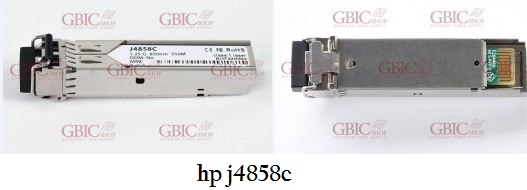What Can Transceivers Do For You And The Facts You Are Unaware About?
In this article, it is explained in detail about an
essential part of a computer and technology known as SFP. In the end, you will
know what SFP capabilities are and what it can offer.
There are two type of Form-Factor Pluggable and they are SFP
and XFP. If abbreviated SFP is Small Form-Factor Pluggable and XFP is 10
Gigabit Small Form-Factor Pluggable.
Explaining further the modules and transceivers:
Fiber Optic Transceivers Modules
The optical fiber transceiver used in computer savvy people
is known as fiber optic transmitter and receiver. The main purpose or function
of the optical module is photoelectric conversion. The end of transmitter
converts the electrical signal into light and then optical fiber transmission
in the fiber cable plant acts as the receiver end which converts the light
signal into electrical signal. Both the ends have their own connections and can
manage transmissions in both directions.
How does it perform its function?
Talking about fiber optics, information is directly sent in
the form of light oscillations. The light oscillation then has to be converted
into electrical ones in order to be used by an electronic device. Now, the
transmitter transforms an electrical signal into an optical signal, which is
linked with a connector and transferred by a fiber optic cable. After that, the light enters from the end of
the cable and is linked to a receiver, where detector transforms the light back
into an electrical signal.
Kinds of Optic Transceivers in Today's Generation:
There are a number of various kinds of fiber optic
transceivers available in the market these days. What they differ in is the
type of connections, data transmission speed, as well as packing forms. As per
the package, the standard type of fiber optic transceivers hot in the market
these days are SFP, SFP+, XFP, X2, Xenpak, GBIC. If we talk about the fiber
type and what will it connect to, there are MM (multimode), SM (Single mode),
as well as WDM fiber (CWDM, DWDM modules).
Following are some applications of Transceiver Modules: FTTH
(GPON, GEPON, Point to Point), Base Station (3G SFP CPRI/ 6G SFP+ CPRI), Fiber
channel (4G SFP/ 8G SFP+), Ethernet systems (from 100Mbps to 10Gbps with
different form factor / SFF, SFP, XFP, and SFP+).
What is the difference between XFP, SFP, and SFP+?
SFP doesn't bear 10G transmission data rate that suggests
they can't be used on the equivalent network. From the price, SFP+ is more
costly than SFP+. SFP is based on IEEE802.3 and SFF-8472 while SFP+ is based on
SFF-8431. Both of them are 10G fiber optical modules and can connect with
another type of 10G modules. The size of SFP+ is tinier than XFP, thus it
introduces some functions to the motherboard, including signal modulation
function, MAC, CDR, and EDC. XFP is based on the standard of XFP MSA. SFP+ is
compliance with the protocol of IEEE802.3ae, SFF-8431, SFF-8432. SFP+ is the
mainstream design. SFP and SFP+ have the same shape and same size
If you are looking for specific optic transceivers like hp j4858c online, type hp j4858c and you will find GBIC- shop providing you all
kind of transceivers along with many other technical products.



